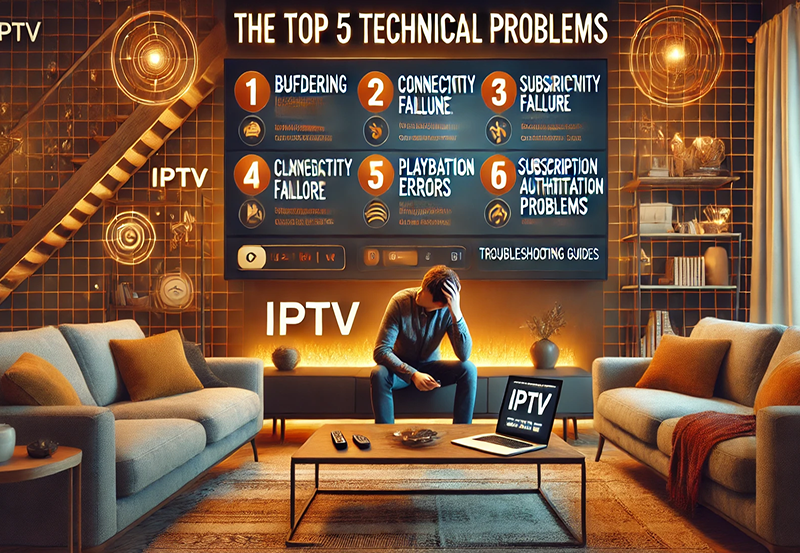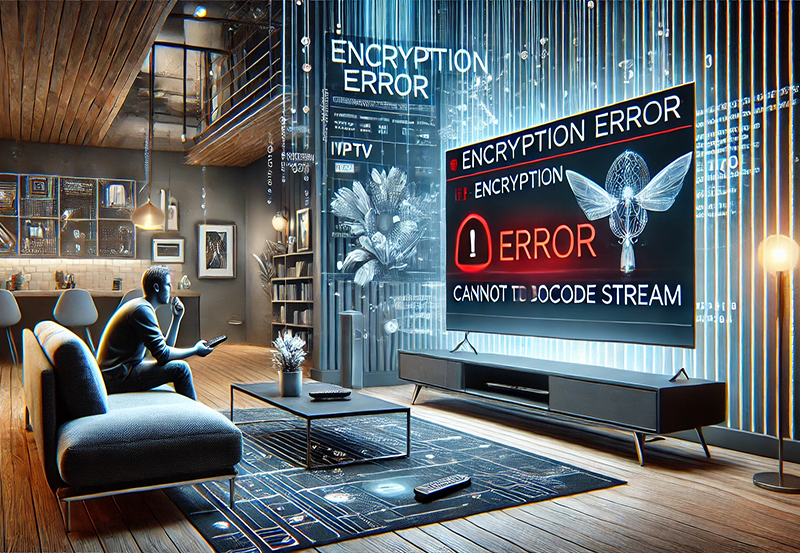When it comes to IPTV, one of the most frustrating issues that users encounter is the dreaded black screen. Imagine eagerly sitting down to watch your favorite show, only to be met with nothing but a blank display. This issue can arise for several reasons, and the good news is that there are many solutions to tackle it. In this article, we’ll walk you through the most common causes and fixes for IPTV black screen problems, helping you get back to seamless streaming.
Buy 1 Year IPTV Subscription Now
1. Check Your Internet Connection
The first step in solving most IPTV issues, including a black screen, is to check your internet connection. IPTV relies heavily on a strong and stable connection. If your network is slow or unstable, the IPTV app may fail to load properly, leading to a black screen.
Solution:
- Ensure your Wi-Fi or Ethernet connection is stable. You can test this by loading a webpage or streaming a video on another device.
- If you’re using Wi-Fi, consider moving closer to your router or switching to an Ethernet cable for a more stable connection.
- Restart your router and device to refresh the network connection.
2. Server-Side Issues
Sometimes, the black screen issue is caused by the IPTV service provider’s server. When there’s high traffic or technical maintenance happening on the server end, streams might not load, resulting in a black screen.
Solution:
- Contact your IPTV provider to confirm if there are any ongoing server issues.
- Wait for the server to be back online or switch to another channel or playlist that may be unaffected.
3. Outdated or Incompatible IPTV App
Your IPTV app itself could be the source of the problem. If the app is outdated or incompatible with the device you’re using, it may cause display issues like the black screen. Additionally, corrupt installation files can prevent the app from functioning correctly.
Solution:
- Update the IPTV app to the latest version. Most developers regularly release updates to fix bugs and improve performance.
- If updating doesn’t work, try uninstalling and reinstalling the app. This can help if the app files were corrupted.
- Ensure that the app you’re using is compatible with your device. Some IPTV apps may not work well with certain operating systems or device models.
4. Incorrect Playlist Settings
An improperly configured M3U playlist can also cause black screens. If the playlist file contains broken links or outdated streams, the IPTV app will not be able to load the channels correctly, leading to a blank display.
Solution:
- Double-check the M3U URL provided by your IPTV service. Ensure that it is up to date and correctly configured.
- Try using the playlist on a different device or IPTV app (such as VLC Media Player) to see if the issue persists.
- If the problem is specific to certain channels, contact your IPTV provider for a refreshed or corrected playlist.
5. Device Memory and Performance Issues
If your device is running low on memory or processing power, it may struggle to run IPTV apps smoothly. This can lead to sluggish performance, crashes, and even a black screen.
Solution:
- Free up memory on your device by closing unused apps or deleting unnecessary files.
- Clear the cache of your IPTV app. This can remove any temporary files that might be causing the app to malfunction.Device-Specific IPTV Troubleshooting: From Fire Stick to Android Boxes
- Restart your device to refresh its performance and free up resources.
- If your device is outdated, consider upgrading to a newer model with better performance.
6. Check Video Output Settings
For users who experience a black screen with audio playing in the background, the issue could be related to video output settings. Incorrect settings can prevent the video from displaying correctly on your TV or monitor.
Solution:
- Check the video output settings of both your IPTV app and device. Ensure that they are set to a compatible resolution for your TV or monitor.
- If you are using an HDMI connection, check that the cable is securely plugged in and is functioning properly. A faulty HDMI cable can also lead to display issues.
7. Firewall and VPN Settings
If you’re using a VPN or your network has a firewall, these settings may sometimes block IPTV streams from loading correctly. This can also result in a black screen.
Solution:
- Disable your VPN temporarily to see if it resolves the issue.
- Check your firewall settings and ensure that they are not blocking the IPTV service’s connection.
- Some IPTV services require a specific VPN server, so check with your IPTV provider to see if they recommend using a VPN for their service.
8. IPTV Provider-Specific Issues
In some cases, the problem could lie with the IPTV service itself. If they are facing a technical issue, maintenance, or are throttling services for certain users, it could cause disruptions in streaming, including a black screen.
Solution:
- Contact your IPTV provider’s customer support to inquire about any known issues.
- If the provider is unreliable and frequently experiences downtime, consider switching to a more stable IPTV service.Ultimate Troubleshooting Guide for IPTV Freezing and Buffering
9. Try Another Device or IPTV Player
If none of the above solutions work, you can try using a different device or IPTV player. Some apps may work better on certain devices, and changing players might resolve the issue altogether.
Solution:
- Test the same IPTV service on another device, such as a smartphone, tablet, or smart TV.
- Use different IPTV players like Perfect Player, TiviMate, or GSE Smart IPTV to see if the black screen persists.
Conclusion
Dealing with IPTV black screen issues can be frustrating, but with the right steps, the problem can usually be diagnosed and resolved. From checking your internet connection to ensuring that your IPTV app is up to date, each step can help bring back your favorite shows in no time. By following these troubleshooting tips, you’ll get your IPTV streaming back on track, allowing for a seamless viewing experience. Remember, if you’re ever in doubt, don’t hesitate to reach out to your IPTV provider for assistance.





